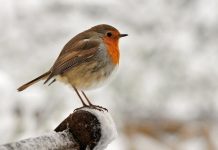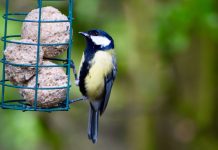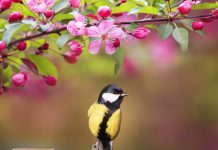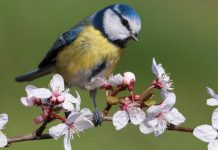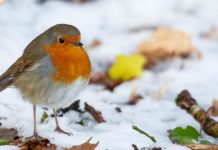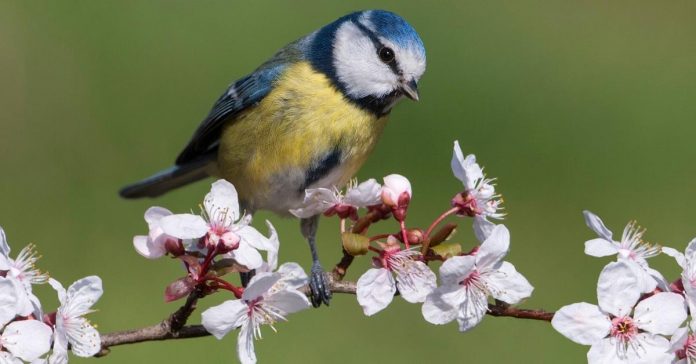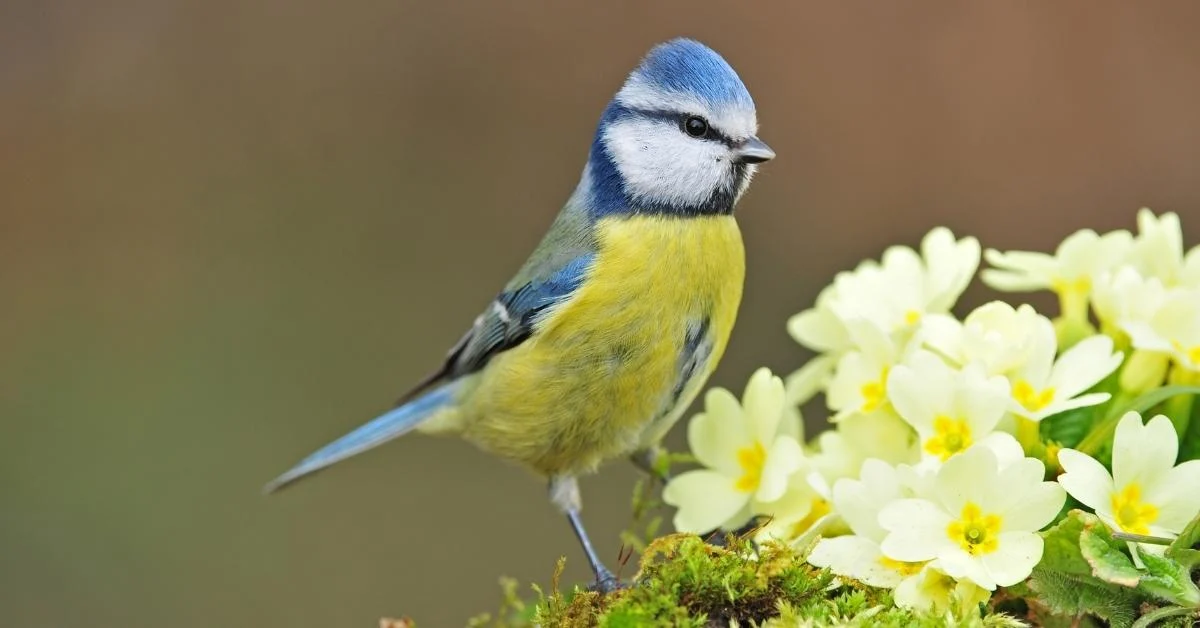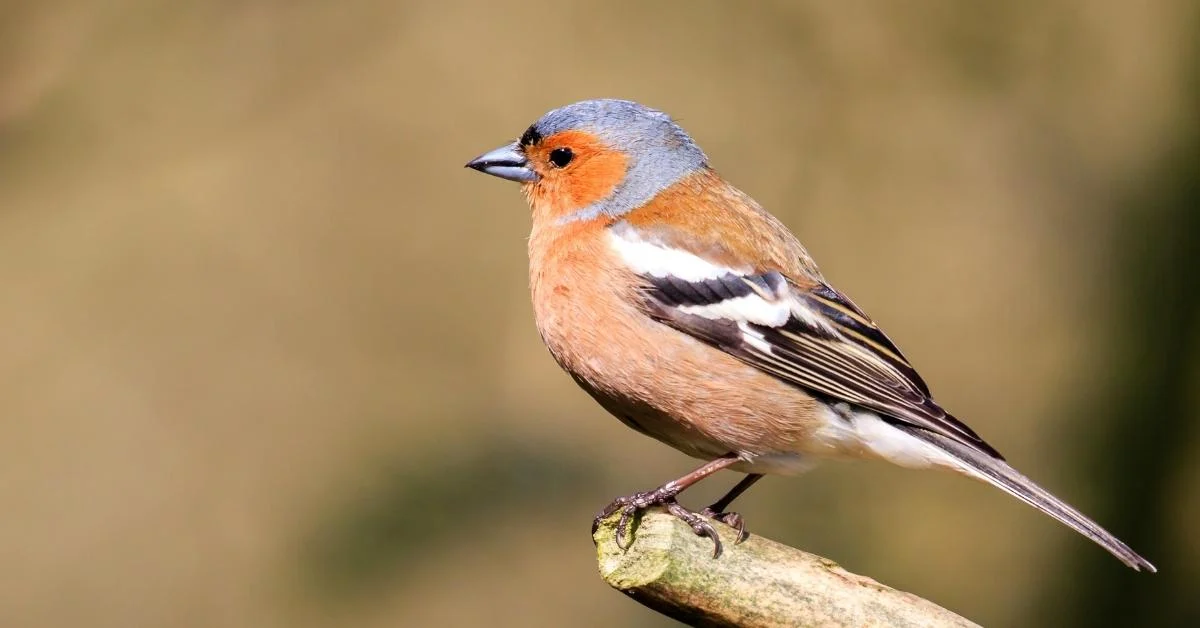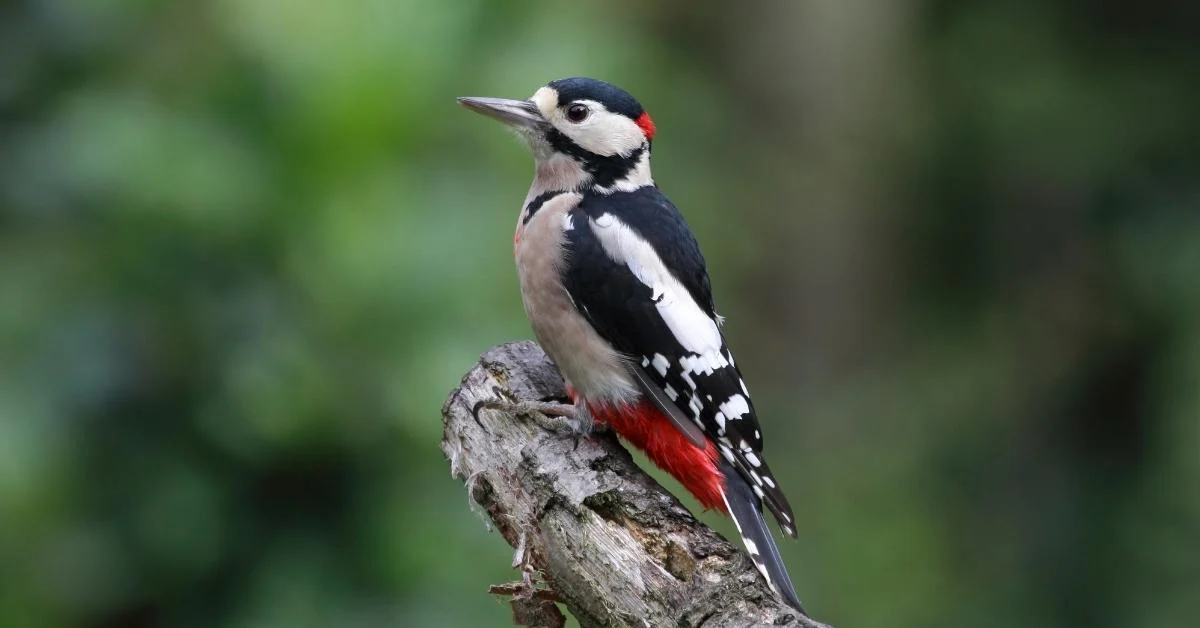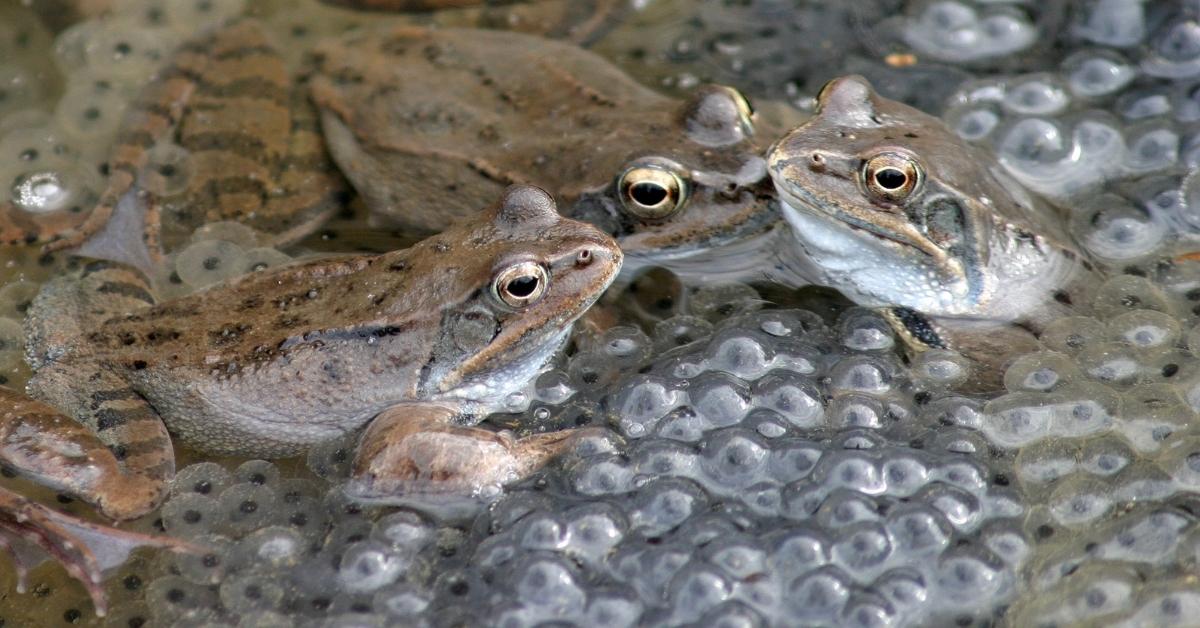Came the Spring with all its splendour,
All its birds and all its blossoms,
All its flowers and leaves and grasses.
– Henry Wadsworth Longfellow
Spring is in the air, the first flushes of blossom adorn the trees and here at Happy Beaks we’re excited for longer, warmer days, the start of the busy nesting season, and more time spent in the garden!
Delve into this month’s Your Happy Beaks Garden to discover birds to spot this spring, key jobs to do in your garden this month and how you can help wildlife in March.
Garden Birds to Spot in March
A mild winter and spring so far has meant that some birds are likely to start nesting early this year. From your lovely #SnappyBeaks photo entries, we know that blue tits have already been checking out nest boxes in gardens up and down the country! Keep an eye out for robins, blackbirds and thrushes flying furtively backwards and forwards with twigs and moss. Here are a few lovely visitors to look out for in your garden this month.
Blue Tit
As one of the UK’s most common garden birds, blue tits have probably been a loyal visitor throughout the winter. However, with breeding season just around the corner, you may notice an increase an activity as they begin to build nests in tree holes and nest boxes. Blue tit numbers have enjoyed a boom in recent years owing to the provision of nest boxes and feed.
Did you know?
- Blue tits rarely stray far from where they hatched, so it is likely that the same families breed in your garden year after year!
Chaffinch
The chaffinch is actually one of the UK’s most common birds, but is mainly seen in rural gardens and particularly those near woodlands. Look out for the eye-catching peachy pink plumage of the male and see if you can spot the less colourful female. Chaffinches are ground feeders so won’t fly up onto bird feeders, but will often hoover up the crumbs from under the table! If you’d like to encourage chaffinches to your garden, have a look at our selection of ground feeders!
Did you know?
- Chaffinches have regional accents! Chaffinch song has been found to vary from one part of the country to another, much in the same way as regional accents in humans.
- Chaffinches have an old nickname ‘bachelor bird’ from their tendency to form all-male flocks in the winter. The females like to head south to sunnier climates over winter, before returning in the spring to reunite with their lifelong mate and raise another brood together.
Great Spotted Woodpecker
If you are lucky you might spot this colourful and increasingly common visitor on your peanut feeder, or hear it drilling a nest hole in a nearby tree. You might even hear it ‘laughing’ at you! The Great Spotted cuts quite a dash with its striking black, white and bright red plumage. You can tell the male from the female by the red patch on the back of the head of the male, which is absent in the female.
Did you know?
- Woodpeckers have spongey tissue at the front of the skull to protect their brain from the impact of drumming.
- Males drum to gain attention – from January to June, a lone male may churn out an exhausting 600 bouts of drumming each day, in comparison to a happily partnered male’s 200 bouts.
- A drumming woodpecker racks up an astonishing speed of 20 pecks per second!
Gardening in March
Veg Gardens
March is the time when the vegetable garden really starts to get going. Now is the time to start sowing lettuces, carrots, beetroot, broad beans, leeks, spinach and chard. It’s also your last chance to sow tomatoes if you haven’t already! Onion sets and chitted potatoes can both be planted towards the end of the month.
Flowers & Bulbs
Your borders can also keep you busy in March, with the last of the winter jobs meeting preparations for the new season. Here are a few tasks that are perfect for cracking on with this month.
- Mulch beds and borders with compost, well-rotted manure or leaf mould.
- Tidy any remaining dead material from herbaceous perennials, cutting last year’s spent stems back to the ground to allow light and air to new growth.
- Deadhead daffodils and other spring bulbs as they finish blooming, but leave the foliage to die back naturally.
- Sow annuals:
- Half-hardy annuals such as cosmos, nicotiana, nasturtium and antirrhinum indoors
- Hardy annuals such as sweet peas, sunflowers, cornflowers and wildflower outdoors
- Finish pruning any roses that haven’t yet been pruned this winter.
- Prune shrubs such as buddleja, fuchsia, cornus and willow.
Wildlife Gardening
Birds
With an ongoing risk of low night-time temperatures combined with birds busying themselves for nestbuilding, it’s really important to continue to provide a steady source of food for the birds in your garden. As we go further into nesting season it is best to replace peanuts with bird seeds mixes and suet balls to avoid the risk of young fledglings choking on large nutty morsels.
Frogs & Toads
If you’ve got a pond, and you’re very lucky, you might spot rafts of frogspawn or toadspawn appear this month. These jelly-like eggs will hatch out into tadpoles after about 3 weeks. Young tadpoles are very vulnerable to predation, so to give them the best chance, consider installing some leafy plant cover in your pond – try these lovely pond plants.
Hedgehogs
This adorable British native mammal is now classed as vulnerable to extinction after massive declines in its rural populations across the UK. But you can help! March is the time when hedgehogs start to emerge from hibernation, and having not eaten or drunk for many months, they will be hungry and thirsty.
To give emerging hedgehogs a helping hand, consider putting out a saucer of meaty cat or dog food or dry cat biscuits, along with a shallow saucer of water. If you’re worried about unwelcome diners hoovering up your offerings, try placing a weighted plastic box over the food with a 13x13cm hedgehog-sized hole cut out at the base of one wall. Alternatively you can wall off the area with a a few bricks on edge, leaving an entry gap, and place a paving stone on top.
Keeping it Clean
It’s more important than ever to help your feathered friends stay healthy by cleaning bird baths and feeders regularly. Our dedicated cleaner and disinfectant is completely safe, easy to use and perfect for the job.
How to clean your bird feeders:
- Clean your feeders outdoors and wear gloves.
- Using a brush and hot water containing a little detergent, scrub the inside and outside of the feeder to remove any old food or droppings.
- Rinse thoroughly with cold water.
- Apply our sanitising spray, following the instructions on the bottle.
- Refill when dry and watch the birds flock back to their favourite diner!
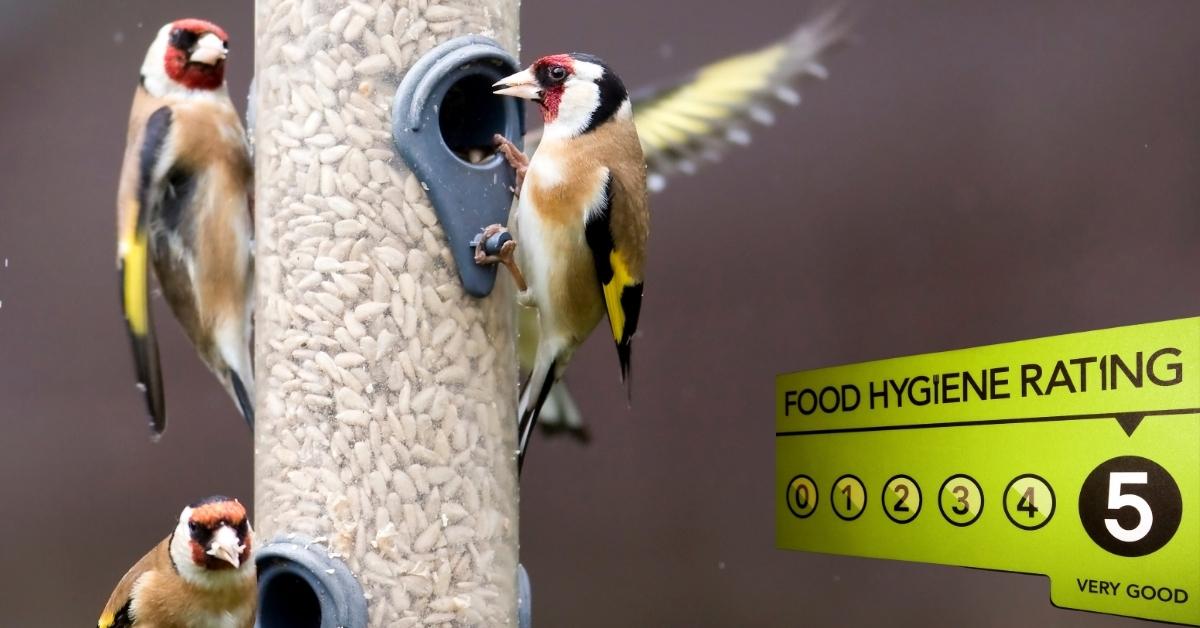 For more information see our blog on why good bird feeding hygiene is important.
For more information see our blog on why good bird feeding hygiene is important.





